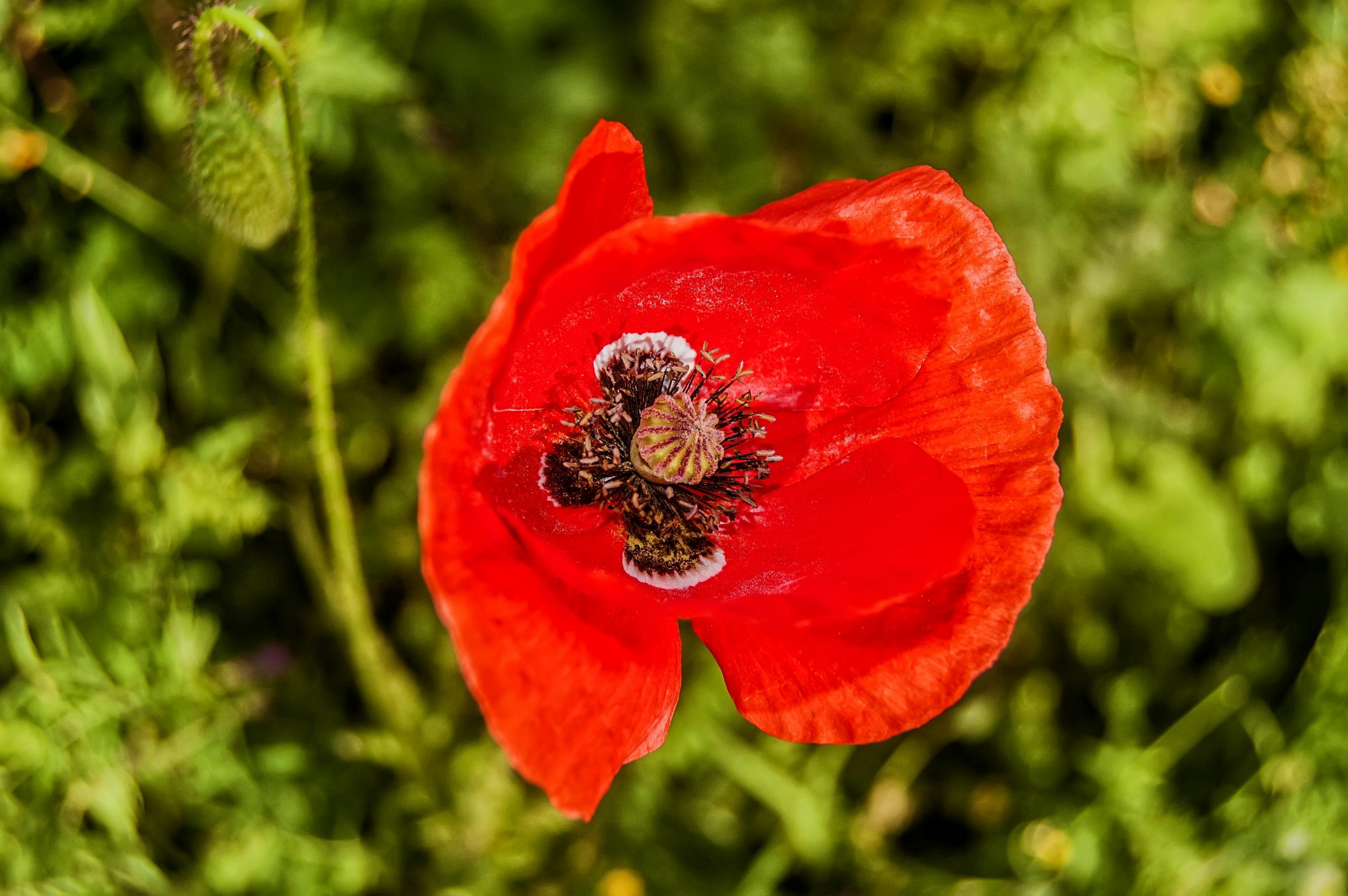Poppy (Papaver rhoeas) is an annual herbaceous plant belonging to the Poppy family (Papaveraceae), known for its bright red flowers. It usually grows in fields and grain fields. Although it is considered a harmful weed to agriculture, its flowers are also used as ornamental plants. Due to the components found in its structure, it is used in the treatment of diseases such as shortness of breath, asthma, bronchitis, and whooping cough. Its mild narcotic and sedative effects are also known.
History and Origin
The poppy gets its name from its flowers, which resemble a red bridal veil. It is derived from the word "gelin" (bride) in Turkish. Historical texts contain information about the plant being used in the treatment of various diseases. In the 14th century, Mesud b. Ahmed's translation titled "Süheyl ü Nevbahar" describes the poppy flower as a red colored plant. During the Ottoman period and in folk medicine, syrups made from its flowers were used for medicinal purposes.

Poppy Plant (Pexels)
Botanical Classification and Species
Poppy (Papaver rhoeas) is an annual herbaceous plant belonging to the Poppy family (Papaveraceae). Known for its bright red flowers, the poppy can also have white or pink flowers. The plant is 25-30 cm tall, and its leaves have a lobed structure. The base of the petals may sometimes contain black spots. Poppy is a widespread species in various parts of the world, and in addition to Papaver rhoeas, there are also varieties such as Glaucium grandiflorum.
Growing Conditions
Poppy is a plant that generally grows in grain fields, rural areas, and roadsides. Preferring temperate climates, the poppy grows more efficiently in sunny areas and well-drained soils. Clayey and tufa soils are suitable environments for poppy growth. Starting to sprout in spring, the poppy blooms fully in summer.
Production Techniques
Poppy is usually propagated by seeds. Seeds sown in spring or autumn easily sprout under suitable moisture and temperature conditions. In agricultural production, soil preparation and weed control are important for productive cultivation. Although it can grow naturally, regular irrigation and the use of organic fertilizers are recommended for agricultural production.
Harvest, Drying, and Oil Production
Poppy flowers are usually harvested during their full bloom. The drying process should be done in the shade, in an airy environment. When the poppy plant is used especially for medicinal and aromatic products, dried flowers can be used in the production of syrups and liqueurs. Poppy oil is extracted particularly from its flower extracts and is utilized in the cosmetic and pharmaceutical industries.
Poppy Cultivation in Türkiye
Türkiye has favorable regions for poppy cultivation. The poppy, which can adapt to various climates and soil structures in Anatolia, is particularly common in the Central Anatolian and Aegean regions. In Türkiye, in addition to agricultural use, the poppy plant is also utilized in traditional medicine.
Areas of Use
Poppy flowers are utilized in various fields:
- Medical Use: Poppy is used as a relaxant in diseases such as shortness of breath, asthma, bronchitis, and whooping cough. Due to its mild sedative effect, it can be used against insomnia.
- Food Industry: Syrups, liqueurs, and gargles can be made from poppy flowers. Dried leaves can be mixed with honey and consumed.
- Cosmetics: Due to its antioxidant and anticarcinogenic properties, it can be used in cosmetic products.
- Agricultural Use: In some regions, it is used as a plant-based support substance.
Historical Use
Poppy has been used for various purposes throughout history. During the Ottoman period, it was known to have been used as a folk remedy due to its calming and insomnia-relieving effects. In Anatolia, the poppy has also stood out as a cultural symbol due to the color of its flowers; it has held an important place in folk literature and oral tradition. According to traditional folk beliefs, yellow poppies were believed to be beneficial for inflammatory diseases, while red ones were thought to strengthen the body due to their antioxidant effect.

